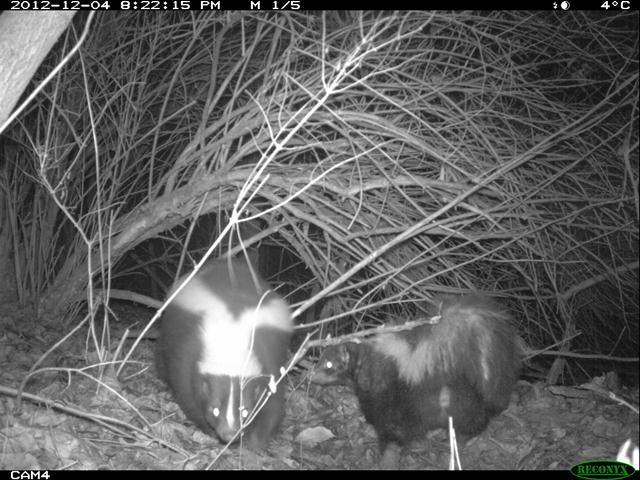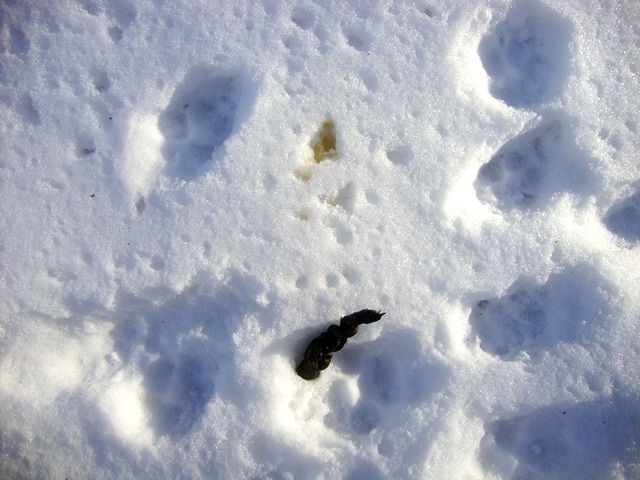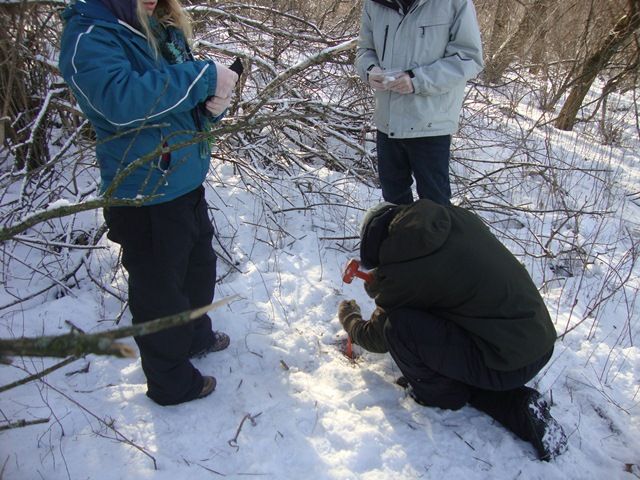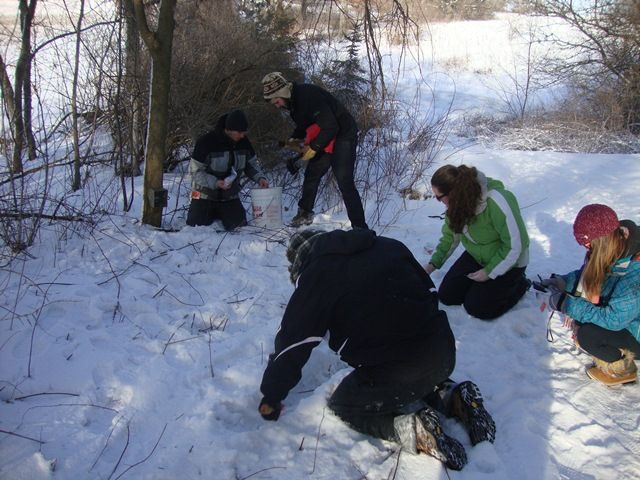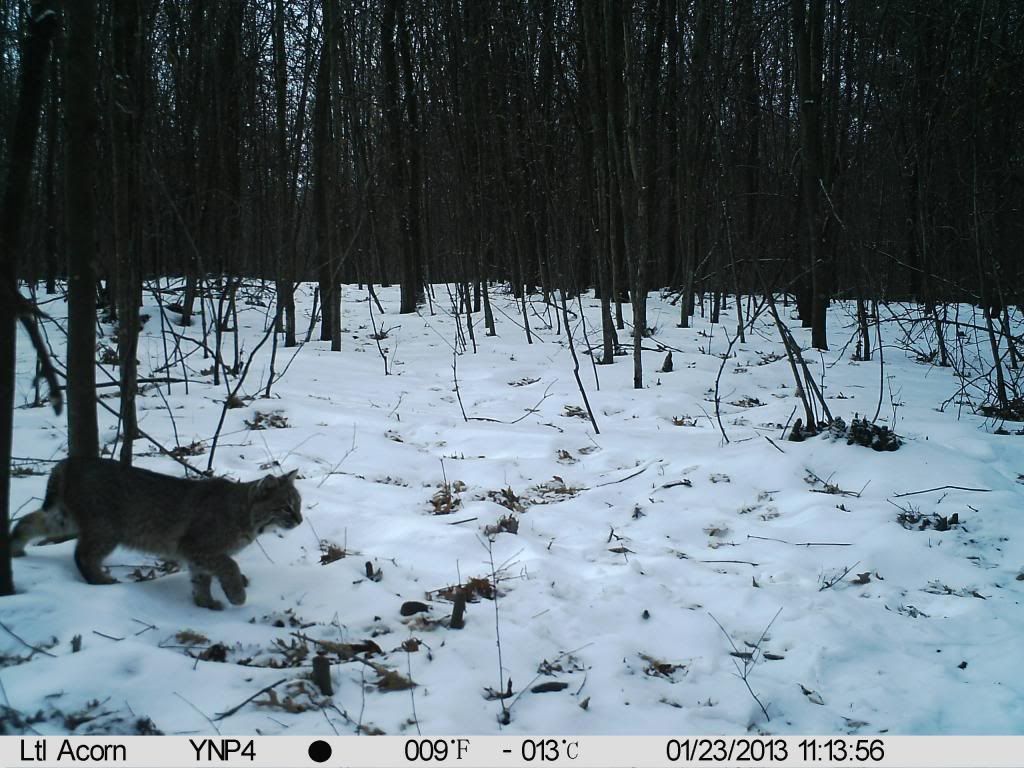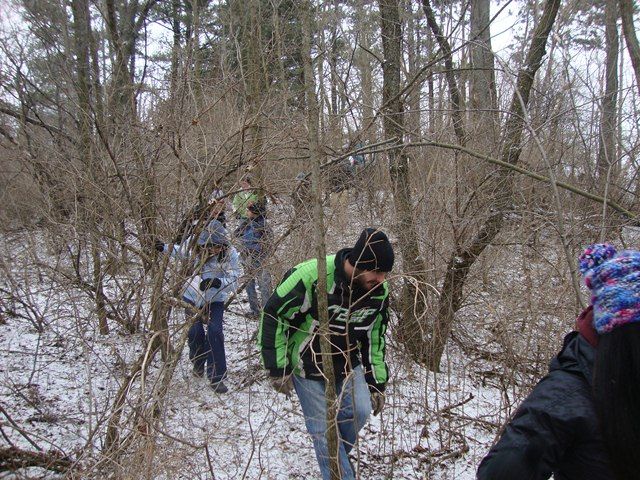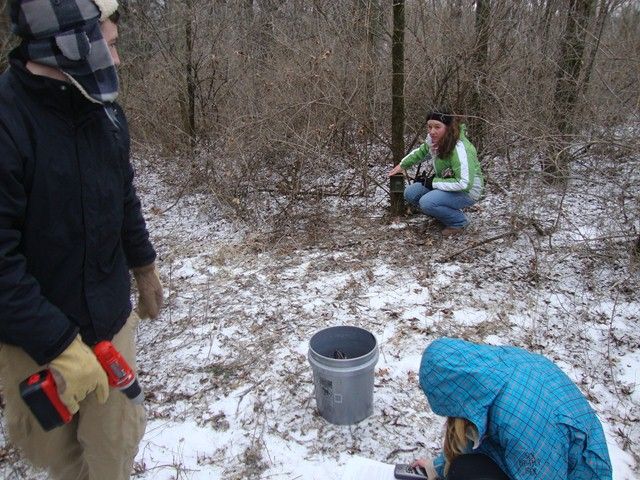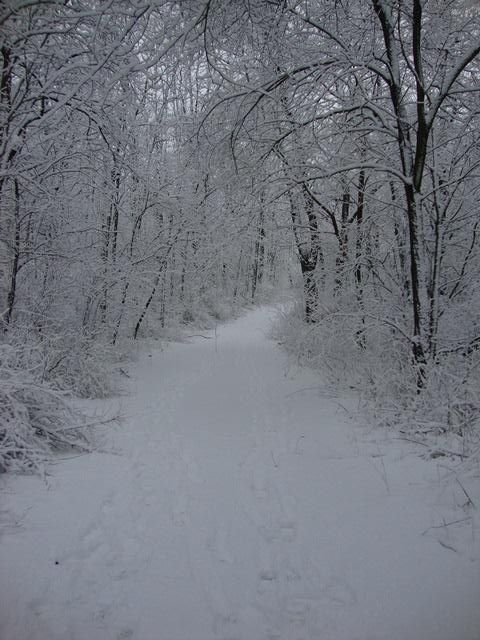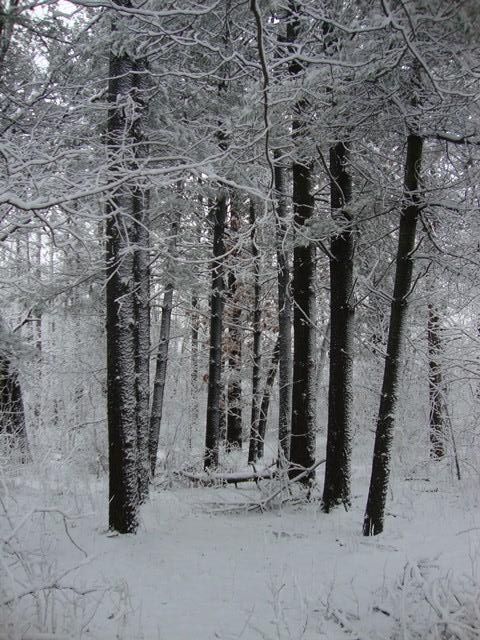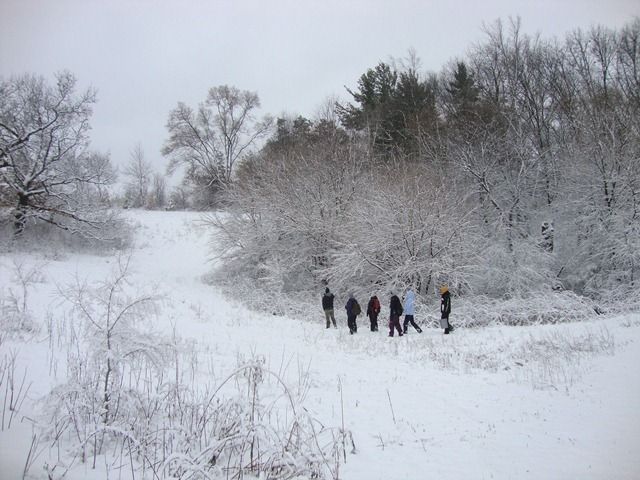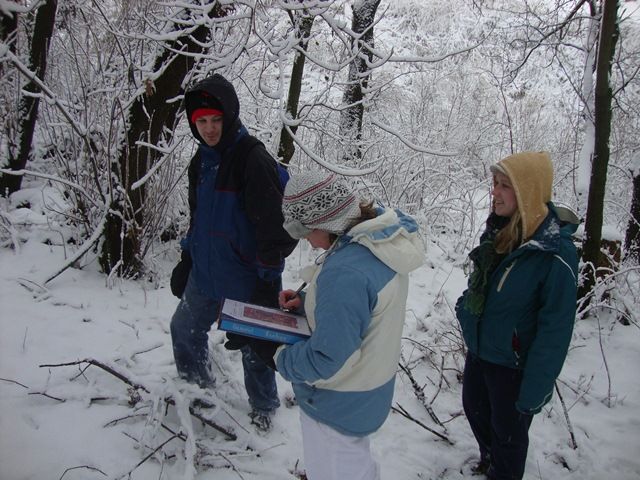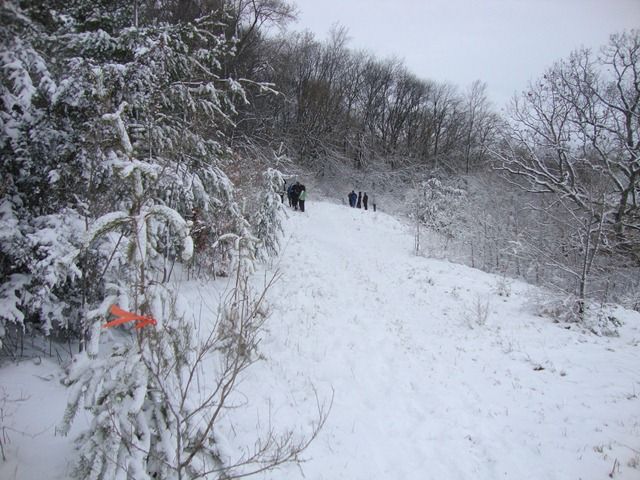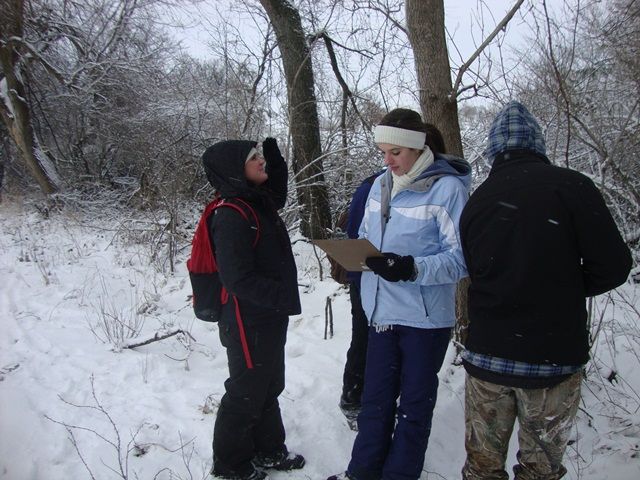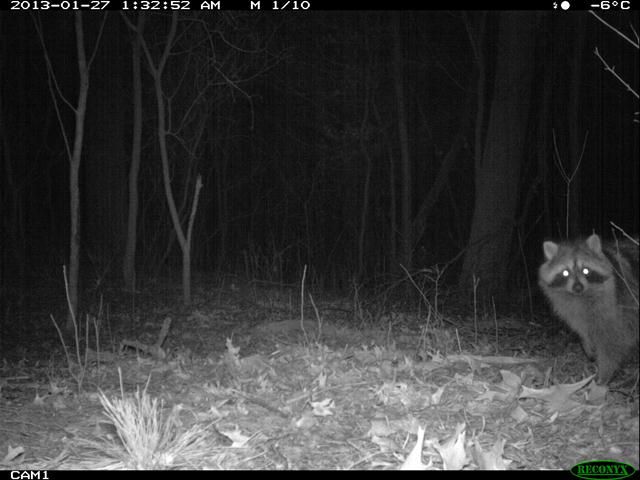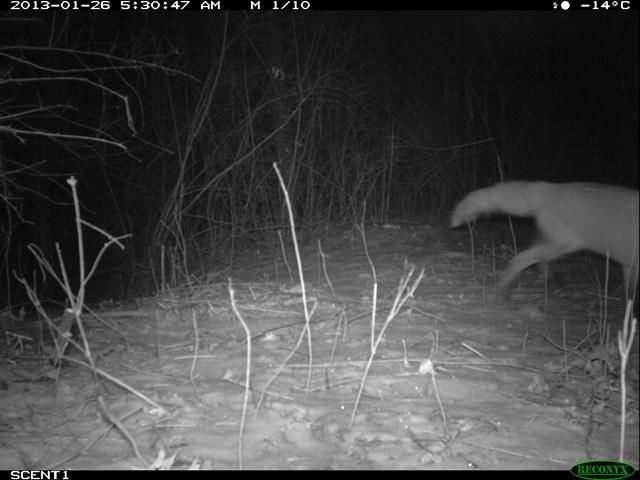I find skulls fascinating.
First of all, so much can be learned from their close inspection. This includes the likely diet of the organism in-question (at least in a general sense)...prominant muscle attachment areas, which provide information on life history....and important information about sensory function and brain-size (just to name a few).
I'm obviously not alone in this. Just about anyone I know who is interested in vertebrate ecology (and obviously morphology) is also a "skull-o-phile".
Anyhoo....figured the best way to share my love of skulls with you all was to dig into the university's specimen collection and show you some examples.
We can start with one of my favorite groups, the reptiles.....
Reptiles:
Look at the teeth of a crocodilian (in this case, a small Black Caiman;
Melanosuchus niger).
Very impressive chompers! Incredibly sharp...well-suited for grabbing prey and holding it fast. This is perfect for an ambush predator that lunges out of the water to grab a critter that's come down for a sip.
BUT...as impressive as these teeth are...they are alittle "one-dimensional". In other words, they are mostly the same in shape (large, sharp and conical), because they all serve a similar purpose: grabbing, holding, tearing prey.
Here's another interesting example....the turtle. Although also a reptile, the turtle's mouth is not filled with teeth. Rather than teeth, turtles have flat, sharp, cutting plates....that resemble a sort of "beak". These cutting plates have are sheath made of keratin (which is protein-based and similar to our fingernails) that is over the bones of the jaw. The example below is the skull of a Snapping Turtle (
Chelydra serpentina; previously known as the Common Snapping Turtle).
This lack of teeth (among other features) differentiates turtles from the rest of the reptiles. In fact, they are in their own Order (Testudines).
Note: other well-known reptiles belong to the Orders Squamata (lizards & snakes), and Crocodilia (crocodilians).
Also, check out the large projection of bone coming off the back of the skull (appearing similar to a crest). This bone, called a supraoccipital bone, creates a large area for muscle attachment....these muscles are involved in bringing those jaws closed with the force that snapping turtles are renowned for. The muscles also play an important role in pulling the head into the shell and keeping it there, where it is protected.
Mammals:
Now let's move on to some mammals....
Mammal teeth, unlike reptile teeth, are "differentiated". In other words, they are not all uniform in shape, size and general purpose. Think of your own teeth.....feel around in your mouth with your tongue...it's fun!. As mammals, we have incisors, pre-molars and molars that all differ in their shape and general use.
These teeth are also modified among the different groups of mammals and reflect their various feeding styles/preferences.
Herbivores:
First, a herbivore.....the White-tailed Deer (
Odocoileus virginianus)
Artiodactyl skulls are easy to identify, as most lack upper incisors. They also have teeth that are very well designed for thoroughly masticating (chewing) tough food: vegetation.
Check out these grinders! They are broad and sharply ridged so that when used appropriately can grind the heck out of even very tough vegetation....in an effort to break it down as much as possible before passing it to the digestive system.
Now compare the WTD to a herbivore specialized for chewing: a rodent. In this case, one of my favorite rodents: the North American Beaver (
Castor canadensis). Rodents have large incisors, immediately followed by a large gap, or arch with no teeth, called a diastema.
Rodents have the broad, flat and ridged pre-molars/molars, for grinding vegetation, that one would expect of a herbivore....
But, as you can see in the top picture of the Beaver above.....they also have those large incisors shaped like chisels.....which is exactly what they are used for. Rodents can use those large chisels to chew with great effect. In the case of the Beaver...as you all know.....they can even chew through tree trunks! Other groups (such as Lagomorphs like rabbits) also have a large gap between chisel-like incisors and molars...but Rodent incisors are different than those of bunnies. The action of chewing actually helps sharpen rodent incisors, due to the thick layer of enamel on the front relative to the back of these teeth. As they rub together....this actually results in the incisors sharpening, which is not the same for lagomorph teeth.
Carnivores:
Compare the teeth of herbivores to that of a strict carnivore: the domestic cat (Felis catus).
Felids have teeth that are very effective at slicing through meat. See the narrow molars and premolars above. These are very sharp and come perfectly together with similarly narrow/sharp molars on the lower jaw to create teeth that behave like meat scissors, called the carnassials.
Note also the large round/bulbous structures at the back of the head (the left one is broken on this specimen)....these are the auditory bullae, and they house the inner ear, including the tiny ear bones (or ossicles): incus, malleus, stapes. Large auditory bullae are often found in mammals with acute hearing.
Canids have carnassials as well. However, many Canids will eat more than just the soft bits of flesh from their prey....and some frequently crack into larger bones, etc. As a result, the molars behind the carnassials on a Canid are more broad and flat for crushing.
We can see this must be put to good use by wolves (Canis lupus; below), as their molars behind the carnassials have fairly broad surfaces for really crunching up bone. Interestingly, according to Paquet and Carbyn (2003), wolf molars are broad...but less broad than the Coyote (Canis latrans), which eats more vegetation that requirs broader molars for mastication.
This is even more interesting when we compare the Wolf's teeth to those of the dainty little Gray Fox (Urocyon cinereoargenteus). According to Cypher (2003), these are often used for "crushing flesh and vegetable foods", which are less difficult to mash-up than bone.
It's also pretty cool to compare the areas for muscle attachment associated with the jaws of these two species. The Wolf has a broad zygomatic arch (cheekbone)....see view from the bottom, looking up through the Wolf's zygomatic arches. Also...note again the large bulbous auditory bullae....
The zygomatic arch helps protect the animal's eyes, but also makes room for large, strong jaw muscles. These muscles attach to the mandible (lower jaw)....run underneath the zygomatic arch...and attach to the sagittal crest. This is a bony projection that runs along the mid-line of the top of the cranium. The large sagittal crest on the wolf represents a big surface area for the attachment of large muscles that power the jaw...and help generate the force to use those molars for crunching through bone.
We can again compare the wolf to the rather diminutive Gray Fox and see that the fox has obvious temporal ridges for muscle attachment, but the sagittal crest is (proportionally) much smaller than in the wolf.
The Gray fox is not so much of a bone cracker.....or at least not to the extent of the Wolf.
________________________________________________________________________
I also can't resist but to compare some of these structures to extinct critters....in this case, Felids. There are a pair of outstanding books that I recommend to anyone interested in skeletal morphology. Wang and Tedford's Dogs: their fossil relatives and evolutionary history, and Turner and Anton's The Big Cats and Their Fossil Relatives. Fun to read and full of great drawings of the extinct critters. I wish I had the rights to include some of the illustrations from these books in my blog, because they perfectly detail what I'm about the describe.
Anyways, if we compare the width of a modern African Lion's (Panthera leo) skull to that of an extinct sabertooth cat, the concepts of large jaw muscles, the zygomatic arch, and feeding strategies can be brought together.
Modern lions have wide skulls due to wide zygomatic arches, and relatively short snouts compared to sabertoothed cats, such as Smilodon sp.. The wide arches accommodate large muscles that produce considerable bite force and strength. This bite force is employed when lions kill their prey. Lions can bring down large prey by clamping their jaws around the throat of the animal...or around the end of their muzzle....and suffocating them. The captured animal will surely struggle when in the lion's jaws, and holding them requires the lions have considerable jaw strength (i.e. large jaw muscles and, thus, wide zygomatic arches to allow the jaw muscles to pass underneath).
The sabertooth cats...however....probably did not use such a hunting/killing strategy. Rather, it's speculated that they held their prey down with their strong fore limbs....and once the prey was immobilized.....unleashed their famous teeth to sever the major veins/arteries and trachea in the throat to quickly kill the animal. Thus, sabertooth cats did not require jaw muscles that were as strong as modern lions, because they used a different strategy to kill their prey. Hence the reason why they have relatively narrow skulls and long muzzles compared to modern lions. Sabertooth cats did, however, need strong fore limbs to immobilize their prey, which are proportionally larger than modern lions.
Wow!
Skulls are fun to talk about! But....all of this has distracted me from the fact that I STILL haven't talked about how to clean them.
Well....we'll get to that next time!
Literature Cited:
Cypher, B.L. 2003. Foxes (Vulpes species, Urocyon species, and Alopex lagopus). In Wild Mammals of North America: biology, management and conservation (second edition). Feldhamer, Thompson, Chapman (eds.). Johns Hopkins University Press.
Paquet, P.C., and L. N. Carbyn. 2003. Gray Wolf (Canis lupus and allies). In Wild Mammals of North America: biology, management and conservation (second edition). Feldhamer, Thompson, Chapman (eds.). Johns Hopkins University Press.



